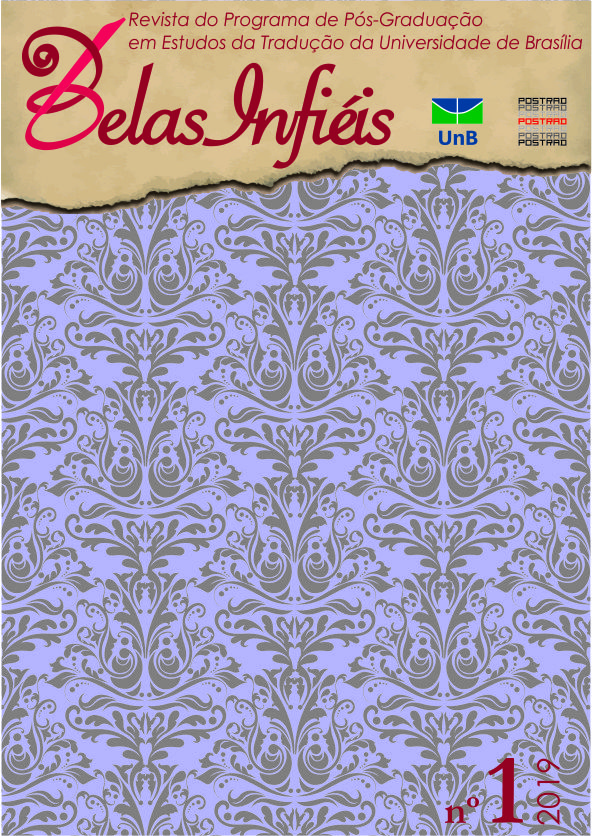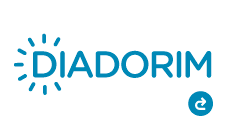International Sign and training for International Sign interpreters
DOI:
https://doi.org/10.26512/belasinfieis.v8.n1.2019.12984Keywords:
International Sign, International Sign Interpreting, Deaf Interpreter, TrainingAbstract
International Sign (IS) is not officially considered a language, as it does not have a defined community of origin. However, it is very well used as kind of equidistant lingua franca from different sign languages of each country, in international deaf meetings. IS cannot be compared with Esperanto as it is not a planned language and also cannot be defined as "Gestuno" which is referring to gestures. Beginning in 1987, the interpreting of International Sign began at the World Federation of the Deaf Congress (WFD), and has been developing to date. The World Association of Sign Language Interpreters (WASLI) provides interim accreditation for interpreters who have experience in IS interpreting for at least 3 years. Deaf persons can act as a professional interpreter as much as the hearing. Deaf interpreters began to be recognized in the Brazilian deaf community beginning in 1993, where they started to work at international conferences (CAMPELLO, 2014), in Brazil where there is still no specific training for deaf interpreters. To this end, we need to encourage more research and invest in qualification and training of these professionals.
Downloads
References
ADAM, R. Language contact and borrowing. In: PFAU, R.; STEINBACH, M.; WOLL, B. (Eds.). Sign language: An international handbook. Berlin: De Gruyter Mouton, 2012. p. 841-861.
ADAM, R. et al. Deaf Interpreters at Work. Washington, DC: Gallaudet University, 2014.
BAKER-SHENK, C.; COKELY, D. American Sign Language. A Student Text Units 10-18. Washington, DC: Gallaudet University Press, 1991.
BOUDREAULT, P. Deaf Interpreters. In: JANZEN, T. (Ed.). Topics in signed language interpreting. Amsterdam: Benjamins, 2005. p. 323-356.
BRASIL. Decreto n. 5626, de 22 de dezembro de 2005. Regulamenta a Lei n. 10.436, de 24 de abril de 2002, que dispõe sobre a Língua Brasileira de Sinais ”“ Libras, e o art. 18 da Lei n. 10.098, de 19 de dezembro de 2000. Disponível em: http://www.planalto.gov.br/ccivil_03/_ato2004-2006/2005/decreto/d5626.htm. Acesso em: novembro de 2018.
BRITISH DEAF ASSOCIATION (BDA). Gestuno: International sign language of the deaf. The revised and enlarged book of signs agreed and adopted by the Unification of Signs Commission of the World Federation of the Deaf. London: British Deaf Association, 1975.
BYUN, K. et al. First Encounters: Repair Sequences in Cross-Signing. Topics in Cognitive Science, p. 1-21, 2017.
CAMPELLO, A. R. e S. Intérprete surdo de língua de sinais brasileira: o novo campo de tradução / interpretação cultural e seu desafio. Cadernos de Tradução, Florianópolis, v. 1, n. 33, p. 143-167, jul. 2014. Disponível em: https://periodicos.ufsc.br/index.php/traducao/article/view/2175-7968.2014v1n33p143. Acesso em: novembro de 2018.
CRASBORN, O.; HIDDINGA, A. Signed languages and globalization. Language in Society, Cambridge, p. 483-505, 2011.
FORESTAL, E. et al. Examples of a Deaf Interpreter's Work. Washington, DC: Gallaudet University, 2012. Disponível em: http://digitalcommons.unf.edu/asleimats/50/. Acesso em: novembro de 2018.
HANSEN, M. What Is International Sign? The Linguistic Status of a Visual Transborder Communication Mode. In: ROSENSTOCK, R.; NAPIER, J. (Eds.). International Sign: Linguistic, Usage, and Status Issues. Washington, DC: Gallaudet University Press, 2016. p. 15-31.
HESSMANN, J. et al. Developing and transmitting a shared interpreting research ethos: EUMASLI ”“ A case study. In: NICODEMUS, B.; SWABEY, L. (Eds.). Advances in Interpreting Resarch: Inquiry in Action. [S.l.]: Benjamins Translation Library, 2011. p. 177-198.
LUCHI, M. Interpretação de descrições imagéticas: onde está o léxico? Dissertação (Mestrado em Estudos da Tradução) ”“ UFSC, Florianópolis, 2013.
MCKEE, R.; NAPIER, J. Interpreting into International Sign Pidgin: An analysis. Journal of Sign Language and Linguistics, p. 27-54, 2002.
MESCH, J. Perspectives on the Concept and Definition of International Sign. Helsinque: WFD, 2010. Disponível em: http://wfdeaf.org/wp-content/uploads/2016/11/Perspectives-on-the-Concept-and-Definition-of-IS_Mesch-FINAL.pdf. Acesso em: novembro de 2018.
MOODY, B. The role of International Sign Interpreting in today’s world. In: ROY, C. B. (Ed.). Diversity and community in the worldwide Sign Language Interpreting Profession: Proceedings of the second WASLI Conference, held in Segovia, Spain, 2007. [S.l.]: Douglas McLean, 2008. p. 19-33.
PEREIRA, M. C.P. Interpretação interlíngue: as especificidades da interpretação de língua de sinais. Cadernos de Tradução, Florianópolis, v. 1, p. 135-156, 2008.
PERLIN, G.; MIRANDA, W. Surdos: O narrar e a política. Ponto de Vista, Florianópolis, n. 5, p. 217-226, 2003.
REIS, F. O Surdo como intérprete. In: XII CONGRESSO INTERNACIONAL E XVIII SEMINÁRIO NACIONAL DO INES, 2013, Rio de Janeiro. Anais... Rio de Janeiro: INES, Departamento de Desenvolvimento Humano, Científico e Tecnológico, 2013.
RODRIGUES, C.; BEER, H. Os Estudos da Tradução e da Interpretação de Línguas de Sinais: Novo Campo Disciplinar Emergente? Cadernos da Tradução, Florianópolis, p. 17-45, 2015.
ROSENSTOCK, R.; NAPIER, J. Introduction: To International Sign or not to International Sign? That Is the Question. In: ______. International Sign: Linguistic, Usage and Status Issues. Whashington, DC: Gallaudet University Press, 2016. p. 1-12.
SILVEIRA, B. Intérprete Surdo: conquistando espaço no campo de conferências no Brasil. In: ALBRES, N. de A. (org.). Libras e sua tradução em pesquisa: interfaces, reflexões e metodologias. Florianópolis: Biblioteca Universitária UFSC, 2017. p. 14-37.
SHENEMAN, N.; COLLINS, P. F. The Complexities of Interpreting International Conferences: A Case Study. In: ROSENSTOCK, R.; NAPIER, J. (Eds.). International Sign: Linguistic, Usage and Status Issues. Whashington, DC: Gallaudet University Press, 2016. p. 167-191.
STONE, C. Toward a Deaf Translation Norm. Whashington, DC: Gallaudet University, 2009.
STONE, C.; RUSSELL, D. Interpreting in International Sign: Decisions of Deaf and Non-Deaf Interpreters. In: CONFERENCE OF THE WORLD ASSOCIATION OF SIGN LANGUAGE INTERPRETERS (WASLI), 4., 2011, Durban, South Africa. Proceedings… Durban: WASLI, 2011. p. 100-118.
SUPALLA, T.; WEBB, R. The grammar of International Sign: A new look at pidgin languages. In: EMMOREY, K.; REILLY, J. S. (Eds.). Language, gesture and space. Mahwah, NJ: Erlbaum, 1995.
WFD-WASLI International Sign Interpreter Accreditation Handbook. [S.l.]: WFD; WASLI, 2016. Disponível em: https://2tdzpf2t7hxmggqhq3njno1y-wpengine.netdna-ssl.com/wp-content/uploads/2017/02/WFD-WASLI-IS-Interpreter-Accreditation_Handbook-31.8.pdf. Acesso em: novembro de 2018
WHYNOT, L. Telling Showing, and Representing: Conventions of the Lexicon in International Sign Expository Text. In: ROSENSTOCK, R.; NAPIER, J. (Eds.). International Sign: Linguistic, Usage and Status Issues. Washington, DC: Gallaudet University Press, 2016. p. 35-64.
WIT, M. de; SLUIS, I. International Sign: An Exploration into Interpreter Preparation. In: ROSENSTOCK, R.; NAPIER, J. (Eds.). International Sign: Linguistic, Usage and Status Issues. Washington, DC: Gallaudet University Press, 2016. p. 105-135.
WORLD ASSOCIATION OF SIGN LANGUAGE INTERPRETERS (WASLI). International Sign Definition. 2014. Disponível em: http://wasli.org/international-sign-definition. Acesso em: novembro de 2018.
ZESHAN, U. “Making meaning”: Communication between sign language users without a shared language. Cognitive Linguistics, v. 26, n. 2, p. 211-260, 2015.
Downloads
Published
How to Cite
Issue
Section
License
Given the public access to this journal, the texts are free to use but requires the recognition of the original authorship and initial publication in this journal to be properly stated.
 The journal allows the use of works published for non-commercial purposes, including the right to submit the work to publicly accessible databases. Published contributions are the sole and exclusive responsibility of the author(s).Â



















